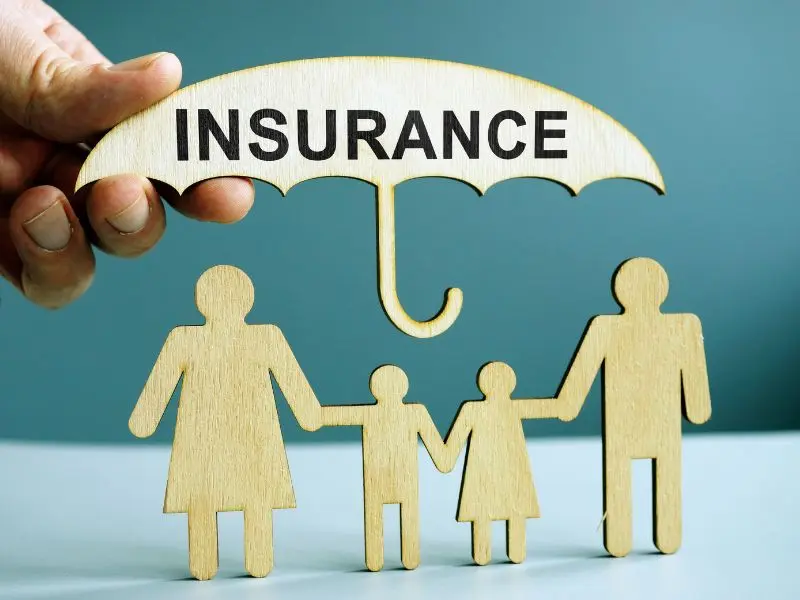What Type of Insurance Do You Need in Wildfire-Prone Areas? A Guide to Fire Insurance
Living in wildfire-prone areas can be both beautiful and dangerous. With the increasing number of wildfires across the globe, it is essential to have the right insurance coverage to protect your property and loved ones. Fire insurance and other forms of property insurance are critical to ensuring you're financially covered when wildfires strike. This guide will help you understand the different types of insurance you need in wildfire-prone areas, ensuring you're prepared in the event of a disaster.
Types of Insurance Coverage for Wildfire Protection
When it comes to securing your home and belongings from wildfires, several types of insurance are essential. Depending on where you live, some policies may be mandatory, while others offer additional protection. Here's a breakdown of the most common types of coverage:
1. Homeowners Insurance
- Homeowners insurance is the most basic form of insurance for anyone owning property in wildfire-prone areas. It typically covers damage to your home, personal belongings, and any attached structures in the event of a wildfire. However, it's important to check if fire damage is specifically covered, as some policies might require an additional rider for wildfire protection.
2. Fire Insurance Rider
- In addition to homeowners insurance, you may need a fire insurance rider if wildfires are not explicitly covered under a standard homeowners policy. This rider can help protect your property in case of fire-related damages, including those caused by wildfires. It can also cover the cost of rebuilding your home and replacing lost belongings.
3. Wildfire Insurance Coverage
- Some insurance companies offer wildfire-specific coverage, which focuses primarily on risks associated with wildfires. This coverage typically includes destruction caused by fires, debris removal, and additional living expenses if you are displaced due to a wildfire. Depending on the location, this may be a standalone policy or an additional feature to existing insurance policies.
4. Renters Insurance
- Renters insurance is crucial for those living in rental properties in wildfire-prone areas. It covers your personal belongings in the event of a wildfire, as well as temporary living expenses if your rental property becomes uninhabitable. Renters insurance policies are usually less expensive than homeowners insurance but still provide valuable protection.
5. Flood Insurance
- While wildfires themselves don't cause flooding, they can lead to mudslides and heavy rainfall that increase the risk of flooding in affected areas. If you live in a region where wildfires are common, consider adding flood insurance to your coverage. It will provide financial support if your property is damaged by water after a wildfire.
Factors to Consider When Purchasing Fire Insurance
When shopping for fire insurance in wildfire-prone areas, it's important to consider several factors to ensure you're adequately protected. Here's a look at what you should keep in mind:
1. Coverage Limits
- Understand the maximum amount your insurance will pay out in the event of a wildfire. Make sure the coverage limits are sufficient to cover the total cost of rebuilding your home and replacing your possessions. Many insurance companies offer additional coverage options if needed.
2. Deductibles
- Some insurance policies may have higher deductibles for wildfire damage. Be sure to review the deductible amount and understand how it will affect your out-of-pocket expenses in the event of a claim. A higher deductible may lower your premium but can increase your costs in the event of a wildfire.
3. Exclusions and Limitations
- Not all fire-related damages may be covered by your insurance. Be sure to review exclusions, such as damages caused by negligence, and ensure your coverage adequately protects against specific wildfire risks. Some policies may exclude certain wildfire-related damages unless you add specific coverage for them.
4. Additional Living Expenses (ALE)
- In the aftermath of a wildfire, you may be forced to leave your home while repairs are made. Additional living expenses (ALE) coverage helps pay for temporary living arrangements, such as hotel bills, while your home is being repaired or rebuilt. Be sure to include this option if it's not automatically included in your policy.
5. Location and Risk
- The risk of wildfire damage varies depending on your geographical location. Insurance companies may charge higher premiums for homes located in high-risk wildfire zones. Make sure to accurately assess your home’s location and choose an insurance policy that matches the specific risks associated with your area.
Comparison Table: Top Fire Insurance Providers for Wildfire-Prone Areas
| Insurance Provider | Policy Type | Coverage Options | Premium Range | Deductible | Additional Features |
|---|---|---|---|---|---|
| State Farm | Homeowners + Wildfire | Fire, Personal Property, ALE | $$ | $500-$2000 | Wildfire-specific coverage available |
| Allstate | Homeowners + Fire Rider | Fire Damage, Rebuilding, ALE | $$ | $1000-$5000 | Customizable policy options |
| Nationwide | Renters + Fire Coverage | Personal Property, ALE | $ | $250-$2000 | Temporary living expenses covered |
| Farmers Insurance | Homeowners + Fire Rider | Fire, Wildfire Coverage | $$ | $1000-$3000 | Wildfire prevention discounts |
| USAA | Homeowners + Wildfire | Wildfire, Personal Property | $$ | $500-$1000 | Discount for military families |
Conclusion: Securing Your Home Against Wildfire Risks
Having the right fire insurance coverage is essential when living in wildfire-prone areas. With the right policies in place, you can protect your home, belongings, and financial security in the event of a disaster. Be sure to assess your needs based on location, risk level, and specific coverage options to ensure you're fully protected during wildfire season.
FAQs About Fire Insurance for Wildfire Areas
Q1: Is wildfire coverage included in my standard homeowners insurance?
A: In many cases, wildfire coverage is included in homeowners insurance. However, some policies may require you to purchase additional wildfire-specific coverage.
Q2: How can I lower my fire insurance premiums?
A: To lower premiums, consider adding safety features to your property, such as fire-resistant materials, or joining a wildfire prevention program.
Q3: What does Additional Living Expenses (ALE) cover in wildfire situations?
A: ALE coverage helps pay for temporary accommodations, food, and other living expenses if your home becomes uninhabitable due to wildfire damage.
By understanding the different types of fire insurance available, you can make an informed decision about the best coverage for your home. Be sure to review your policy regularly to ensure it aligns with the evolving risks associated with living in wildfire-prone areas.
Explore

What Type of Life Insurance Is Right for You?

How to Choose the Right Hair Growth Serum for Your Hair Type and Needs

Hair Growth Serums: Real User Reviews and Results You Need to Know

What to Expect from New Child Support Laws in 2025: Key Changes You Need to Know

Frequently Asked Questions About Over Denture Implants: Everything You Need to Know

How to Save Big on Ozempic: Top Coupon Offers You Need to Know

Everything You Need to Know About Starting a Franchise

Tax Implications of Receiving a Stimulus Check: What You Need to Know
